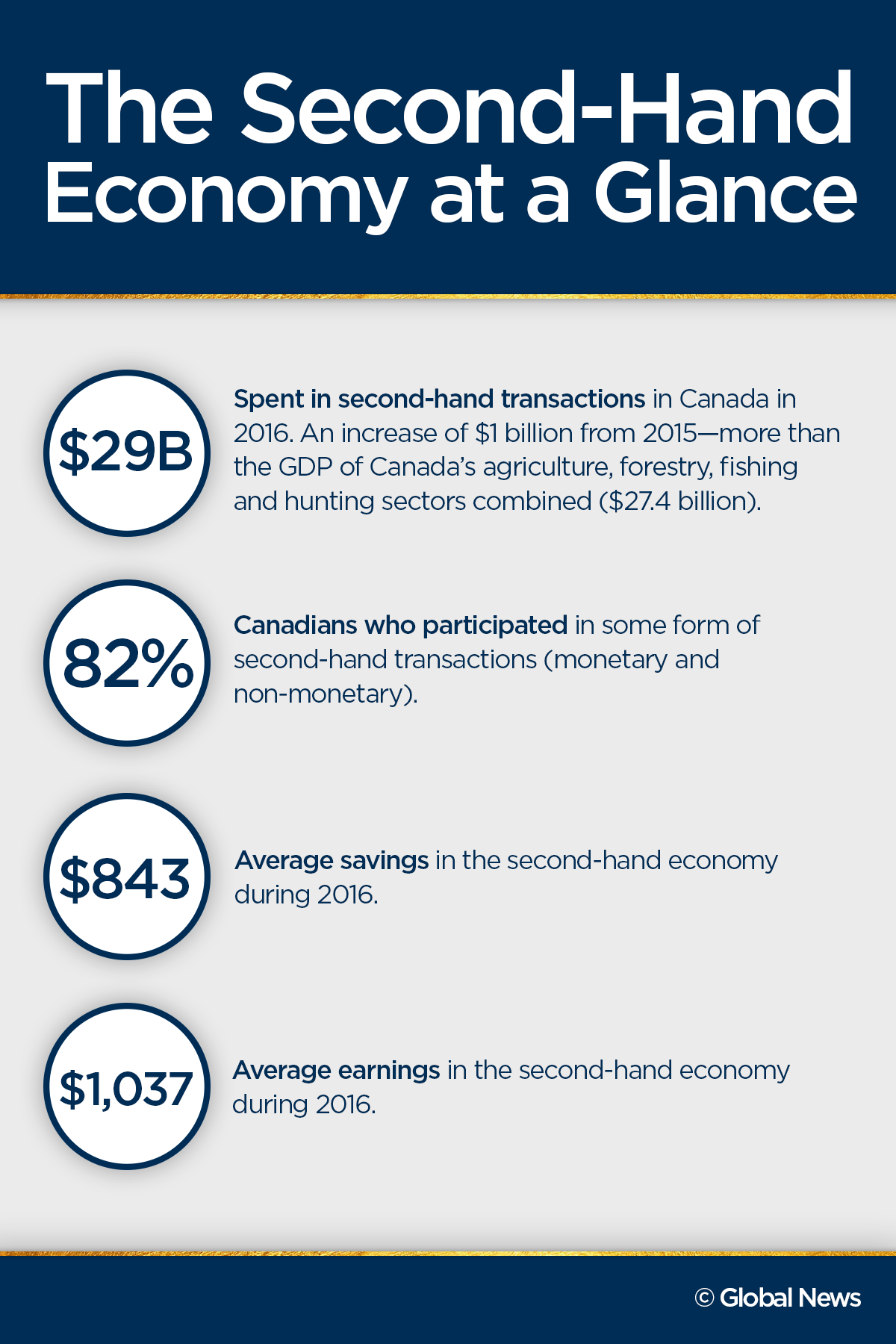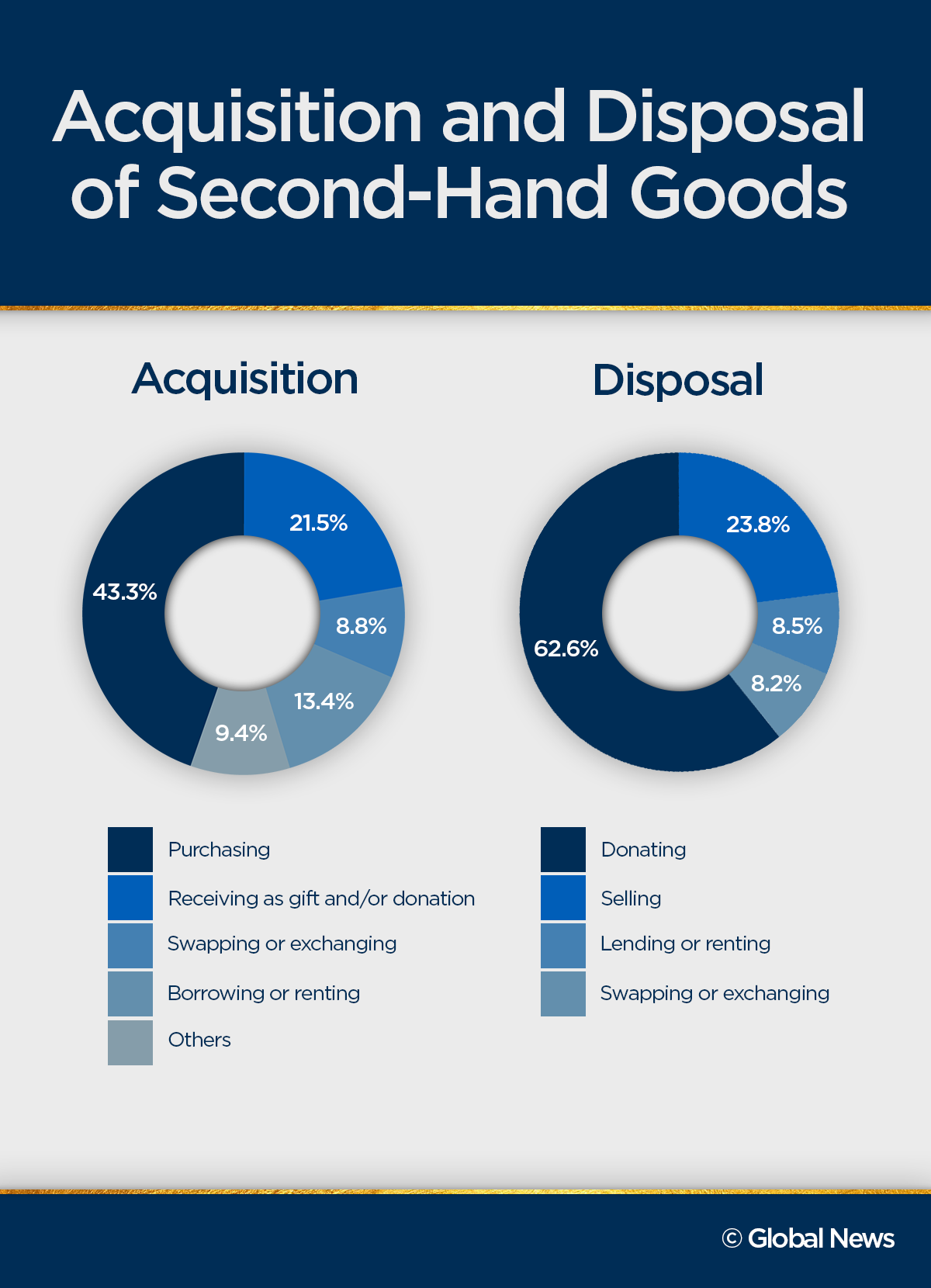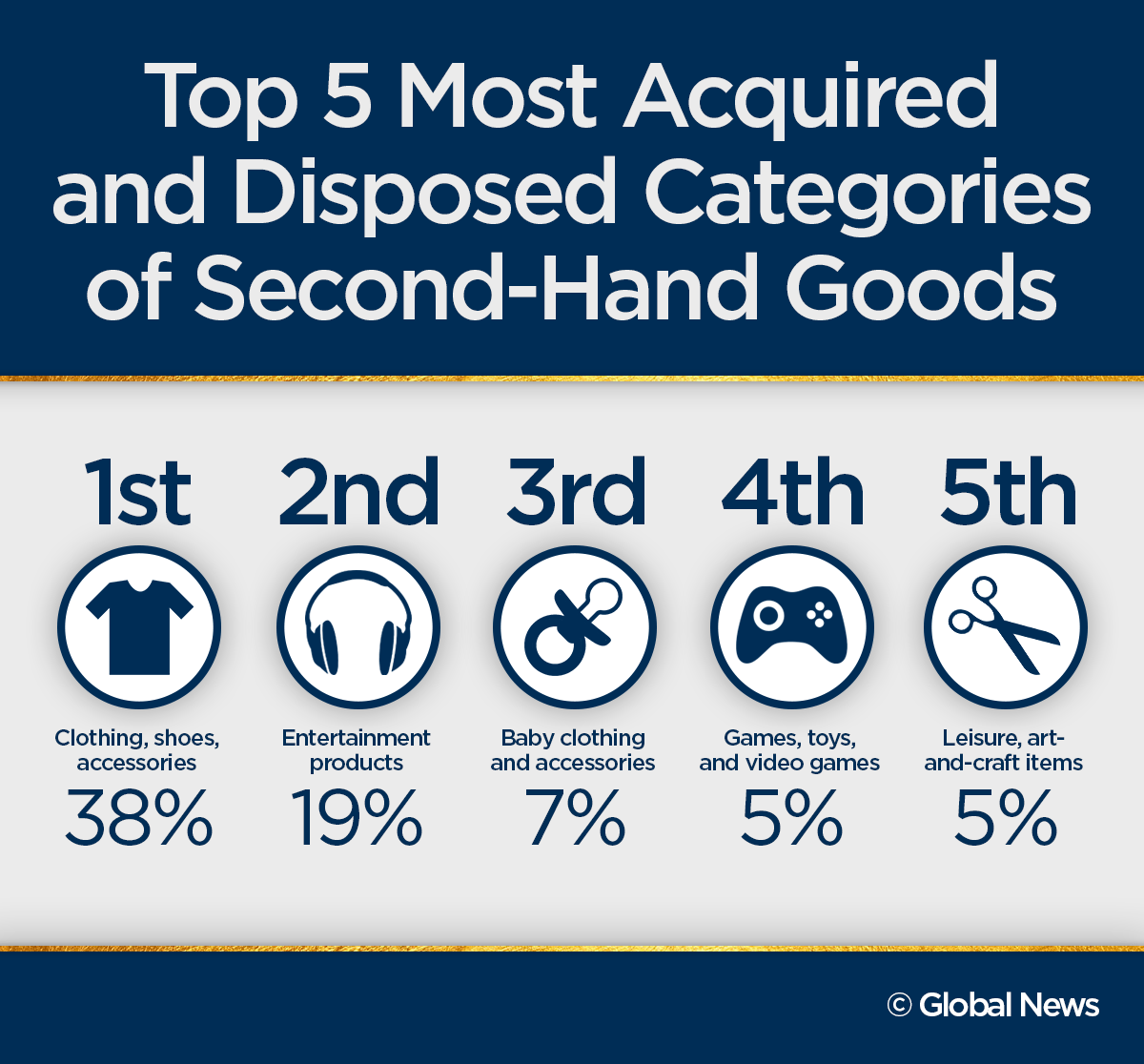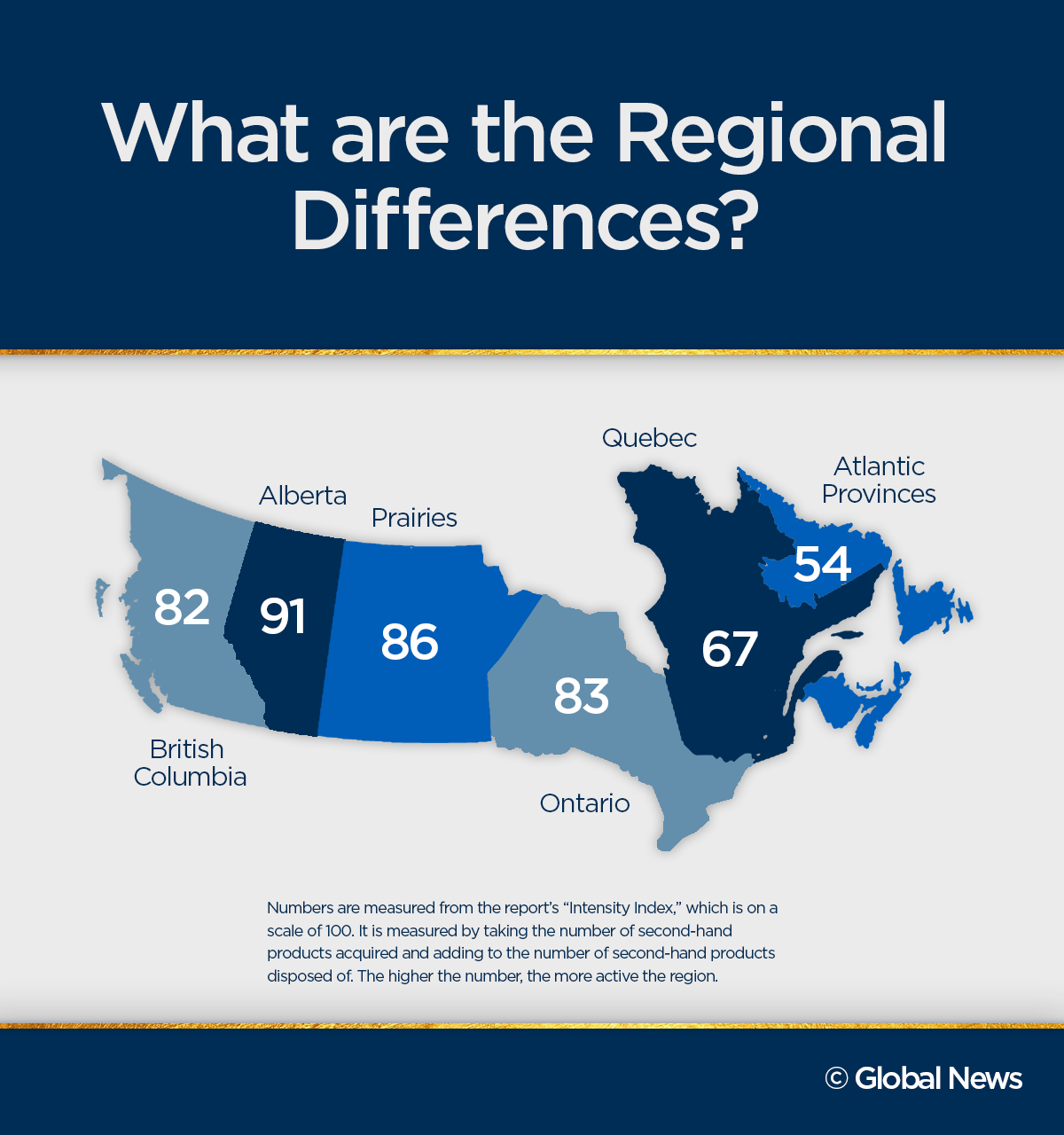Now more than ever, Canadians are ditching the idea of buying new in favour of second-hand purchases, swaps and donations in order to both make and save money in today’s economy, a recent report reveals.

According to Kijiji’s Second-Hand Economy Index, released Tuesday, Canadians traded almost two billion second-hand goods (or an average of 78 second-hand products exchanged by Canadians) and spent a total of $29 billion in second-hand transactions in 2016 – that’s an increase of $1 billion from the previous year.
In fact, Canada’s second-hand economy makes up about 1.4 per cent of Canada’s total GDP.
According to Statistics Canada, Canada’s agriculture, forestry, fishing and hunting sector GDP in 2015 was $27.4 billion, and $28.3 billion in 2016. Newfoundland and Labrador’s GDP sits at around $30.1 billion, the province’s provincial website states.
READ MORE: Canadian job numbers beat expectations, as full-time hiring soars
- What is a halal mortgage? How interest-free home financing works in Canada
- Capital gains changes are ‘really fair,’ Freeland says, as doctors cry foul
- Budget 2024 failed to spark ‘political reboot’ for Liberals, polling suggests
- Peel police chief met Sri Lankan officer a court says ‘participated’ in torture
Overall, 82 per cent of Canadians participated in some form of second-hand dealing, 73 per cent of which acquired at least one second-hand item while 69 per cent have disposed of one or more of such items.
But, the report says, whatever is bought, sold or exchanged through the second-hand economy is not actually measured through the country’s actual GDP – but it does have a significant impact.
Connolly and her team estimate that the second-hand economy has an overall impact of between $35 and $38 billion, both directly and indirectly as it supports spending as well as jobs within Canada.
“What surprised me the most about the study was that spending remains stable and it’s growing over time,” Connolly says. “It means that there’s a really large number of products that are being exchanged every year – that are changing hands.”
So how are Canadians spending their newly-found wealth?
They’re making everyday purchases, putting it in the bank and paying off debts, mostly.
Breaking it down, Alberta comes out on top as the region that participates the most in the second-hand economy followed by the Prairies. The Atlantic provinces, however, participate the least – findings that show a clear east-west divide, the report points out.
Connolly and her team were not able to find out why the divide between eastern and western Canada exists.
Despite Quebec being the second-last province on the participation scale, it’s the province with the smallest proportional differences between its buyers and sellers. This means Quebecers are more likely to both buy and sell items compared to other provinces, where they’re more likely to want to sell more items than what they’re buying.
But is the second-hand economy here to stay? Connolly says yes.
“My guess will be that it’s going to keep growing,” Connolly says. “This isn’t something that’s going to disappear overnight. Canadians are taking more and more to buying, selling and donating items and give second life to their items and I think we can expect the second-hand economy continue to be there and grow.”
Graphics by Jesse Skelton









Comments